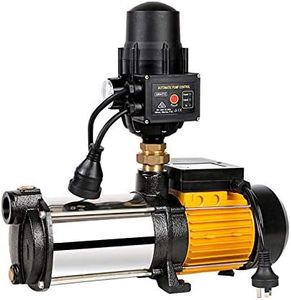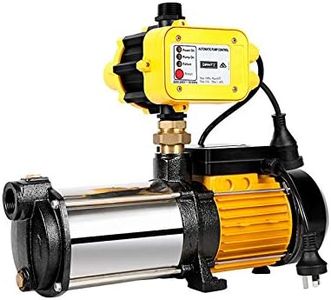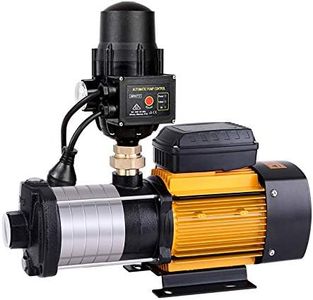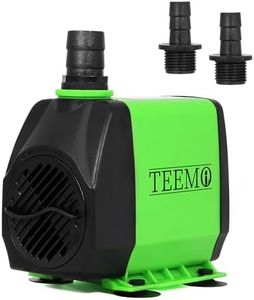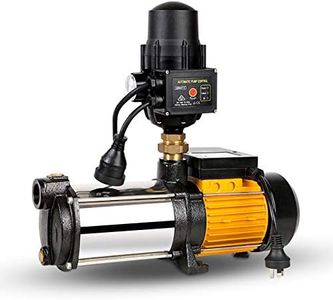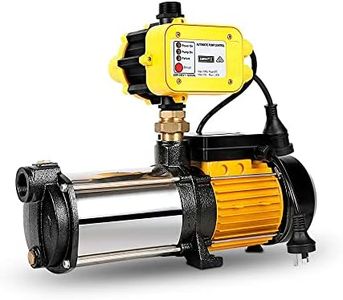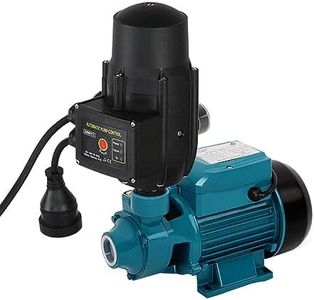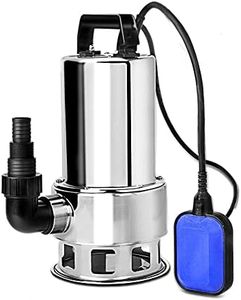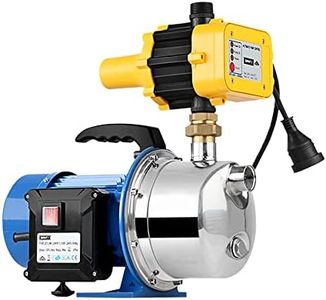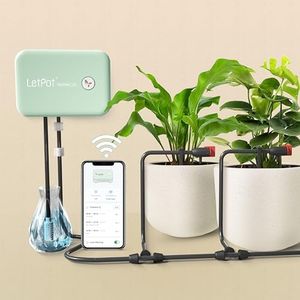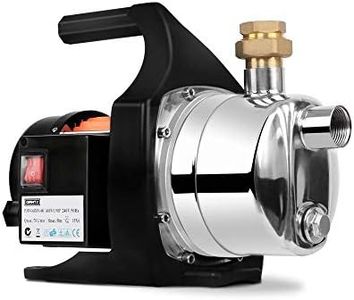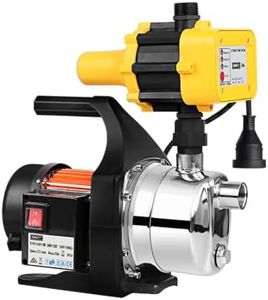We Use CookiesWe use cookies to enhance the security, performance,
functionality and for analytical and promotional activities. By continuing to browse this site you
are agreeing to our privacy policy
10 Best Irrigation Pumps
From leading brands and best sellers available on the web.Buying Guide for the Best Irrigation Pumps
Choosing the right irrigation pump is essential to keep your garden, lawn, or crops properly watered. The perfect pump should match your water source, the amount of water you need, and the way you distribute that water. Think about where your water comes from—like a well, lake, or tank—how big the area is, and whether you want the system to run automatically or manually. A careful look at the main features will help you find an efficient and reliable pump for your needs.Flow Rate (GPH or LPH)Flow rate tells you how much water the pump can move in a certain amount of time, typically measured in gallons per hour (GPH) or liters per hour (LPH). It's important because it determines whether your irrigation system gets enough water. Low flow rates suit small gardens and drip systems, medium rates work for larger lawns or multiple garden beds, while high flow rates fit big lawns or fields. Think about the size of your watering area and how quickly you want to water it to decide which flow rate you need.
Pressure (PSI or bar)Pressure measures how forcefully the pump pushes water, shown in pounds per square inch (PSI) or bar. Higher pressure helps water reach further distances or higher elevations, which is crucial for sprinklers or sloped gardens. Low-pressure pumps are great for drip or soaker hoses on flat ground. Pick your pump's pressure based on the type of irrigation (like sprinklers versus drip), the height difference between your water source and plants, and the distance the water must travel.
Pump TypeIrrigation pumps come in various types including centrifugal, submersible, booster, and jet pumps. Centrifugal pumps are common for surface water and general use, submersible pumps are ideal for wells or deep water sources, booster pumps increase pressure in existing systems, and jet pumps handle both shallow and deeper water sources with some pressure boost. Choosing the right type depends on your water source location, depth, and access—pick a pump style that matches how and where you’ll collect water.
Power SourcePumps may be powered by electricity, gasoline, diesel, or even solar energy. Electric pumps are quiet and convenient if you have easy access to power, while gasoline and diesel pumps are portable for remote areas. Solar pumps are good for off-grid, sunny locations. Consider where your irrigation will be, how reliable your power supply is, and if you need portability. Pick the power source that matches your access to energy and intended use location.
Self-Priming AbilitySelf-priming ability allows a pump to clear air and begin pumping water on its own after being started, which is important for convenience and reliability. Not all pumps can do this—some need water manually added before use. For irrigation systems that may run dry or need frequent stopping and starting, self-priming can save time and hassle. If your water source is below the pump or if you won’t be present to restart it often, a self-priming pump is a smart choice.
Material and DurabilityThe materials used in the pump’s construction affect how well it stands up to weather, dirt, chemicals, and corrosion. Pumps made from stainless steel, heavy-duty plastics, or coated metals generally last longer. If you’ll be pumping water with debris or chemicals (like fertilizers), or using the pump outdoors all year, durability matters more. Think about your environment and pick a pump made from materials suited to your weather and water quality.
Automatic Control CompatibilitySome pumps can be connected to timers, sensors, or irrigation controllers for automatic start and stop. This feature is important if you want to save time or water, or if you plan to irrigate while you’re away. For manual watering, this feature is less critical. Consider how hands-on you want to be—if you’d rather set it and forget it, look for a pump that works with automation.

